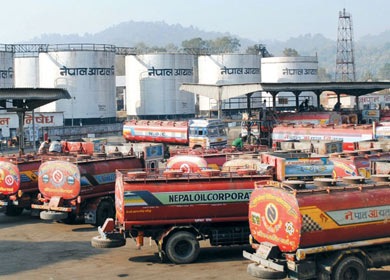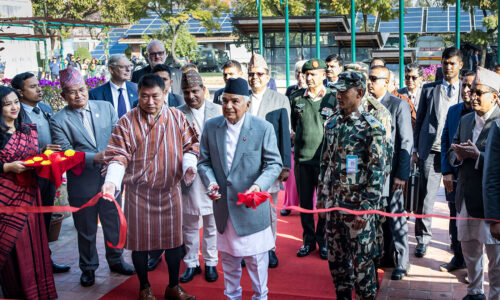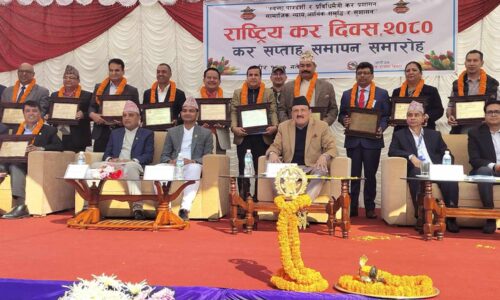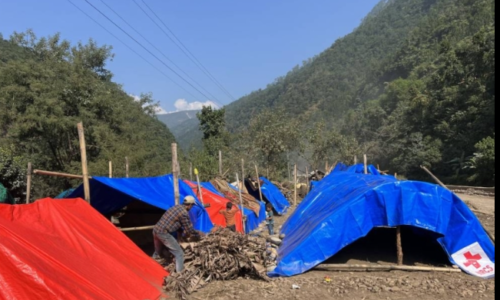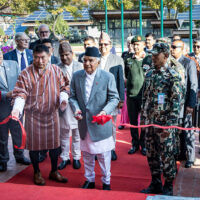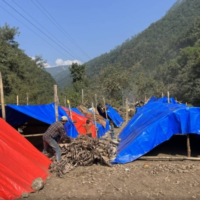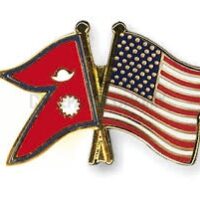Nepal Oil Corporation (NOC) and Indian Oil Corporation (IOC) – at the end of two-day talks – today agreed to acquire land and distribute compensation for the Amlekhgunj-Raxaul petroleum pipeline within three months.
The 41-km proposed cross-border petroleum pipeline from the Indian border town of Raxaul to Amlekhgunj in Nepal covers 39 km in Nepal.
A 12-member Indian Oil delegation, who arrived in the capital on Tuesday, has agreed on time frame for land acquisition and compensation distribution to expedite the 30 year old project.
The financial proposal of the project – may be developed under the $1 billion soft loan that Indian Prime Minister Narendra Modi promised during his visit – will be further discussed during another high-level meeting scheduled to be held in Mumbai, India on August 27. India and Nepal have – at the end of Modi’s visit on August 4 – committed to construct Raxaul-Amlekhgunj petroleum pipeline in the first phase and extended to the valley in the next phase to facilitate smooth supply of petroleum products.
After the August 27 meeting – that will finalise financial proposal – the detailed survey will start, according to the Nepal Oil Corporation.
A preliminary field survey has revealed that the pipeline will pass through 25 km of farmland and 16 km of jungle. Nepal has also to acquire a 1.8-km long patch in Indian territory of which 1-km lies along a railway track and the rest consists of agricultural fields.
According to the chief of NOC depot in Amlekhgunj Bhanu Khanal, there will be no problem in acquiring land in India as the Indian government has taken the project seriously after its premier’s commitment.
However, NOC has yet to coordinate with Forest and Road departments in Nepal, apart from the landowners, to acquire land and get approval for the project, he said, adding that the pipeline will be laid far from human settlement as it could cause political troubles.
The state oil monopoly will not have to buy land but get right-of-way permission from landowners for a 15-metre wide and 25-km long stretch.
Under the right-of-way permission, the government will compensate landowners for use of their property. Landowners will be barred from building permanent structures within five metres on either side of the pipeline but they can till their land and grow crops.
The project estimated to cost Rs 2 billion will be completed within six months of its start, he added.
The underground petroleum pipeline will be laid at a depth of 1.5 metres in the farmland, and at a depth of 30 metres across the rivers.
The petroleum tanker owners have been opposing the pipeline project as their service will be redundant after the pipeline that will ensure smooth supply in far less cost. According to the estimation, the pipeline is expected to reduce transportation costs by almost half, control leakage and ensure hassle-free transfer and quality of petroleum products.
However, the fuel tanker owners have been in news in recent days for oil theft and earlier pressurising the government to bow down against their demands, making the consumers suffer.
There are around 250 petroleum tankers on the Amlekhgunj-Raxaul route.
Likewise the technically bankrupt NOC has also decided to construct three vertical fuel tanks – each with a capacity of 16,000 kilo litres – to store diesel at the Amlekhgunj depot. Currently, the depot can store 15,700 kl.
Similarly, the NOC has also planned four more tanks – two each for petrol and aviation turbine fuel – with a combined capacity of 12,000 kl. “After the new tanks, the Amlekhgunj depot will have a capacity to stock more than 15 days’ demand of fuel,” Khanal informed.


